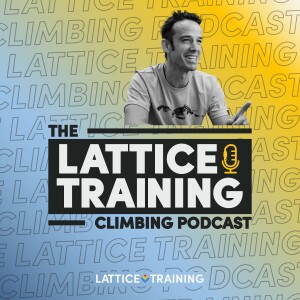
- Podcast Features
-
Monetization
-
Ads Marketplace
Join Ads Marketplace to earn through podcast sponsorships.
-
PodAds
Manage your ads with dynamic ad insertion capability.
-
Apple Podcasts Subscriptions Integration
Monetize with Apple Podcasts Subscriptions via Podbean.
-
Live Streaming
Earn rewards and recurring income from Fan Club membership.
-
Ads Marketplace
- Podbean App
-
Help and Support
-
Help Center
Get the answers and support you need.
-
Podbean Academy
Resources and guides to launch, grow, and monetize podcast.
-
Podbean Blog
Stay updated with the latest podcasting tips and trends.
-
What’s New
Check out our newest and recently released features!
-
Podcasting Smarter
Podcast interviews, best practices, and helpful tips.
-
Help Center
-
Popular Topics
-
How to Start a Podcast
The step-by-step guide to start your own podcast.
-
How to Start a Live Podcast
Create the best live podcast and engage your audience.
-
How to Monetize a Podcast
Tips on making the decision to monetize your podcast.
-
How to Promote Your Podcast
The best ways to get more eyes and ears on your podcast.
-
Podcast Advertising 101
Everything you need to know about podcast advertising.
-
Mobile Podcast Recording Guide
The ultimate guide to recording a podcast on your phone.
-
How to Use Group Recording
Steps to set up and use group recording in the Podbean app.
-
How to Start a Podcast
-
Podcasting
- Podcast Features
-
Monetization
-
Ads Marketplace
Join Ads Marketplace to earn through podcast sponsorships.
-
PodAds
Manage your ads with dynamic ad insertion capability.
-
Apple Podcasts Subscriptions Integration
Monetize with Apple Podcasts Subscriptions via Podbean.
-
Live Streaming
Earn rewards and recurring income from Fan Club membership.
-
Ads Marketplace
- Podbean App
- Advertisers
- Enterprise
- Pricing
-
Resources
-
Help and Support
-
Help Center
Get the answers and support you need.
-
Podbean Academy
Resources and guides to launch, grow, and monetize podcast.
-
Podbean Blog
Stay updated with the latest podcasting tips and trends.
-
What’s New
Check out our newest and recently released features!
-
Podcasting Smarter
Podcast interviews, best practices, and helpful tips.
-
Help Center
-
Popular Topics
-
How to Start a Podcast
The step-by-step guide to start your own podcast.
-
How to Start a Live Podcast
Create the best live podcast and engage your audience.
-
How to Monetize a Podcast
Tips on making the decision to monetize your podcast.
-
How to Promote Your Podcast
The best ways to get more eyes and ears on your podcast.
-
Podcast Advertising 101
Everything you need to know about podcast advertising.
-
Mobile Podcast Recording Guide
The ultimate guide to recording a podcast on your phone.
-
How to Use Group Recording
Steps to set up and use group recording in the Podbean app.
-
How to Start a Podcast
-
Help and Support
- Discover

Common Mistakes For Endurance Training: Part 1 With Tom Randall
Endurance training is a foundational element of performance preparation or training for almost every athlete, no matter what their discipline. Boulderers, sport climbers and trad climbers should all be completing phases of endurance training during their year. What is also common across these disciplines, is a consistent set of mistakes that climbers typically make when completing this type of training.
In part one of this podcast, Tom Randall talks about the "Intensity" aspect of endurance work and how high, moderate and low intensity work affects the outcomes in technical, psychological and physical performance or adaptation.
Low intensity endurance examples: Continuity or ARC training
Moderate intensity endurance examples: 50:50s or Polarised Continuity
High intensity endurance examples: 1 On 1 Off or 2 On 1 Off
Technical outcomes:
1. Speed and pace of climbing.
2. Playing to your personal technical strengths, not working weaknesses
Psychological outcomes:
1. Good at trying when fresh, but not when fatigued
2. Low or high 'suffering' thresholds
3. Time spent working on 'flow' and 'highly efficient and relaxed' climbing
Physical:
1. Neurological e.g. de-recruitment training stimulus
2. Structural e.g. hypertrophy or vascularisation
3. Metabolic e.g. muscle enzyme activity
The Lattice jingle is brought to you by Devin Dabney, music producer of the outdoor industry who also hosts the American Climbing Project.
More Episodes
 2024-01-06
2024-01-06
 2023-11-18
2023-11-18
 2023-10-14
2023-10-14
 2023-08-05
2023-08-05
 2023-07-08
2023-07-08
 2023-06-10
2023-06-10
Create your
podcast in
minutes
- Full-featured podcast site
- Unlimited storage and bandwidth
- Comprehensive podcast stats
- Distribute to Apple Podcasts, Spotify, and more
- Make money with your podcast
It is Free
- Privacy Policy
- Cookie Policy
- Terms of Use
- Consent Preferences
- Copyright © 2015-2025 Podbean.com




